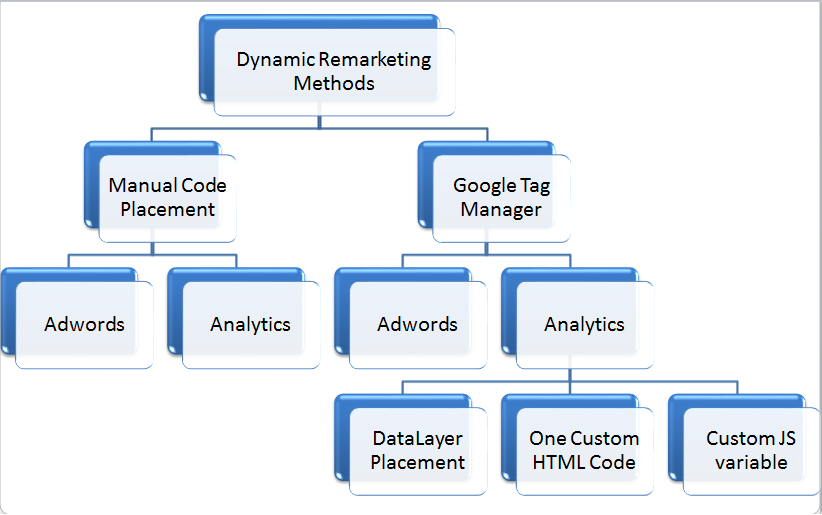A Total Overview to Remarketing In Google Analytics
Wiki Article
Harnessing Remarketing in Google Analytics: A Comprehensive Guide
Harnessing remarketing in Google Analytics offers businesses a tactical edge in reaching out to potential customers. The ability to target people that have actually currently connected with your internet site offers an one-of-a-kind opportunity for tailored marketing efforts. By comprehending how to craft audience checklists and release them efficiently, companies can significantly boost their conversion prices. Nonetheless, the ins and outs of setting up and optimizing remarketing campaigns require an extensive understanding of target market division and efficiency analysis. This guide will certainly shed light on the essential actions associated with taking advantage of the full potential of remarketing in Google Analytics, leading to enhanced marketing outcomes.Recognizing Remarketing in Google Analytics
Remarketing in Google Analytics permits services to purposefully target individuals that have actually formerly engaged with their website or mobile app. By leveraging data from Google Analytics, companies can create customized remarketing checklists based on customer behavior, such as web pages checked out, actions taken, or specific goals accomplished. This powerful tool allows organizations to re-engage with individuals who have revealed passion in their services or products, ultimately raising the probability of conversion.Recognizing the different sorts of remarketing methods is critical for an effective project - What Is “Remarketing” In Google Analytics?. Google Analytics provides numerous options, including conventional remarketing, vibrant remarketing, and remarketing listings for search advertisements (RLSA) Each kind offers an unique function and can be tailored to satisfy certain advertising and marketing goals
In addition, analyzing the performance of remarketing projects is vital for enhancing results. Google Analytics offers important insights into the effectiveness of different remarketing strategies, permitting organizations to make data-driven choices and fine-tune their targeting technique. By constantly readjusting and monitoring remarketing efforts based upon analytics data, services can maximize ROI and drive success in their marketing campaigns.
Establishing Remarketing Campaigns

After setting up audience checklists, the next step is to connect Google Analytics with Google Advertisements. By linking these 2 systems, services can perfectly move audience checklists from Google Analytics to Google Advertisements for remarketing objectives. This combination enables more specific targeting and much better campaign efficiency.
Once the accounts are connected, companies can develop remarketing projects in Google Ads making use of the target market notes formerly defined in Google Analytics. These projects can be customized with certain advertisement creatives, messaging, and bidding process techniques to properly re-engage with previous visitors and drive conversions. By complying with these steps, organizations can take advantage of the power of remarketing to boost their advertising initiatives and increase ROI.
Making Use Of Target Market Segmentation Approaches

Predefined segments in Google Analytics enable you to swiftly analyze common audience groups fresh individuals, returning customers, or users who completed a certain objective on your internet site. Custom sectors, on the various other hand, allow you to create one-of-a-kind sections based upon certain standards that are vital to your company goals. Dynamic remarketing listings immediately adjust based upon user behavior, showing customized advertisements to customers that have actually engaged with your website in particular ways.
Analyzing Remarketing Performance Metrics
Upon evaluating the effectiveness of remarketing campaigns in Google Analytics, the evaluation of key performance metrics offers read here valuable understandings right into audience interaction and conversion rates. By delving into metrics such as click-through prices (CTR), read review conversion rates, price per procurement (CPA), and return on ad invest (ROAS), marketing professionals can evaluate the success of their remarketing initiatives. CTR shows the percentage of users who clicked the ad after seeing it, showing the advertisement's importance and allure. Conversion prices measure the percent of individuals who finished a preferred action, such as purchasing, after clicking the ad. Certified public accountant discloses the average cost sustained for every conversion, aiding examine campaign earnings. ROAS, on the other hand, quantifies the income created for every single dollar invested on advertising. Evaluating these metrics makes it possible for marketing experts to optimize projects, fine-tune target market targeting, and allocate spending plans efficiently to improve overall remarketing performance.Enhancing Remarketing Approaches
When refining remarketing methods in Google Analytics, concentrating on audience division is paramount for achieving project success. By splitting your target market right into certain sectors based upon their actions, demographics, or interests, you straight from the source can tailor your ads more effectively per team. This targeted method raises the likelihood of involving individuals that have actually currently revealed interest in your product and services, bring about greater conversion prices.Another important element of enhancing remarketing approaches is continuously testing and refining your campaigns (What Is “Remarketing” In Google Analytics?). A/B testing various advertisement creatives, messaging, or deals can aid you recognize what reverberates best with your audience and drives the most conversions. By analyzing the efficiency of these examinations in Google Analytics, you can make data-driven decisions to enhance your remarketing efforts even more
Moreover, leveraging vibrant remarketing can significantly enhance your campaign results. This function allows you to reveal personalized advertisements to customers based on their previous interactions with your site, showcasing service or products they have actually formerly checked out. By delivering customized web content to customers based upon their habits and passions, vibrant remarketing can assist enhance engagement and drive conversions.
Conclusion
In conclusion, harnessing remarketing in Google Analytics is a critical technique to target individuals who have formerly involved with a site. By developing personalized target market listings and utilizing target market segmentation methods, companies can enhance remarketing projects for raised conversion prices. Evaluating efficiency metrics and constantly optimizing strategies are critical for taking full advantage of the efficiency of remarketing initiatives.Google Analytics provides various alternatives, including standard remarketing, vibrant remarketing, and remarketing lists for search advertisements (RLSA)After setting up audience checklists, the next action is to connect Google Analytics with Google Advertisements. By connecting these two systems, businesses can effortlessly move target market checklists from Google Analytics to Google Ads for remarketing functions.As soon as the accounts are linked, organizations can create remarketing projects in Google Ads utilizing the audience provides formerly specified in Google Analytics.When refining remarketing techniques in Google Analytics, concentrating on target market division is critical for attaining campaign success.
Report this wiki page